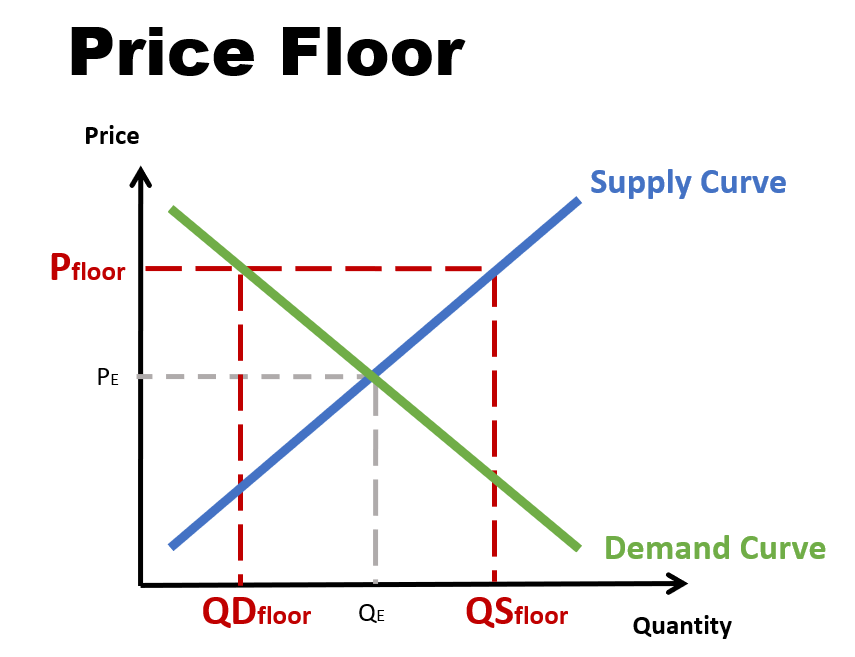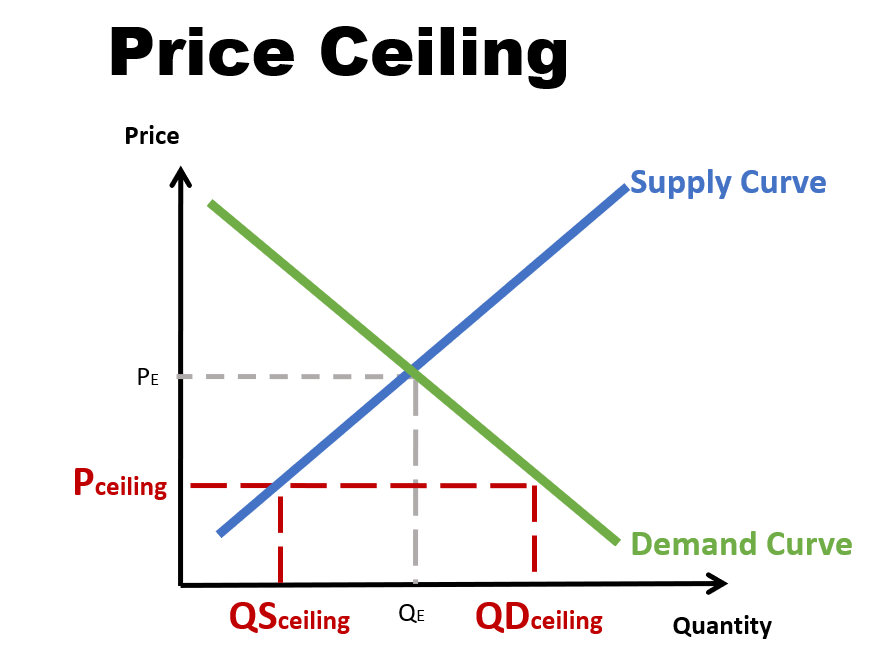Price Controls
In certain instances, the government may intervene in the market to control prices. In such cases, the market will not be in equilibrium.
1. Price Floor
Price floor overview
The government may set the price at a level higher than equilibrium; this is called a minimum price or price floor. This will lead to more goods being supplied than what the market demands.
The rationale for setting a price floor can be due to the following reason(s):
- To protect producer’s income
- To create a surplus of the good
- In the case of minimum wage, to protect workers’ income from falling below a certain level.

Impact of a price floor
- Potential waste due to excess supply — Misallocation of resources, which can be used to produce other goods.
- Potential lack of control — Firms with surplus output may evade price controls and cut prices
- Lower efficiency — Less efficiency in use of resources, as products are not being produced at the optimal point.
Ways the government can deal with the excess surplus
- Buy — The government can buy up surplus goods and either store it, destroy it or sell it — This will reduce the excess.
- Quota — Restricting producers to production quotas. Essentially, this will restrict companies’ production to ensure that they don’t produce more than what the market actually demands.
- Advertise — Demand can be raised by advertising . This increased demand will reduce the excess.
- Creative – The government can be creative and find alternative uses for the excess goods. This will reduce the excess.
- Control substitutes — The government can implement policies to cut down on the consumption of substitute goods by imposing taxes or quotas on these substitutes. This will increase the consumption of the excess good, hence reducing the excess.
2. Price Ceiling
Price ceiling overview

When the government set a maximum price or price ceiling, they are preventing it from rising. This will lead to less goods being supplied than what market actually wants.
The rationale for a price ceiling are as follows:
- To protect consumers and ensure “fair” prices for essential goods.
- In certain situations (e.g. times of war/famine), the government can set a price ceiling for basic goods so that it is still affordable.
Impact of a price ceiling
- Shortages — Shortages will result, and government intervention is needed to allocate these scarce goods. For instance, the government look at one of these potential interventions:
- First come first serve
- Setting criteria for purchase
- Specifying which customers should be allowed to buy
- Black Markets — It is possible that a shortage of goods may lead to the emergence of black markets, where customers, unable to buy enough in legal markets, may be prepared to pay very high prices to secure the goods in illegal or black markets.
Ways that the government can deal with the negative impact of a price ceiling
- Draw down reserves — the government typically stores reserves of some goods to be used in crises situation. Hence, the government may draw on stocks that they have ‘safe-kept’ to reduce the shortage.
- Act as supplier — The government may produce the goods themselves. Just like certain goods that the market are not able to provide at a certain affordable price (e.g. Housing, telecoms, utilities, Ports), the government can look at playing the role of a producer and supply the goods to meet the needs of the market.
- Subsidies or tax reductions — government may give tax relief or subsidies to firms to encourage them to produce more. For instance, if the government increase the subsidy to producers, it will help increase the supply of that good.
